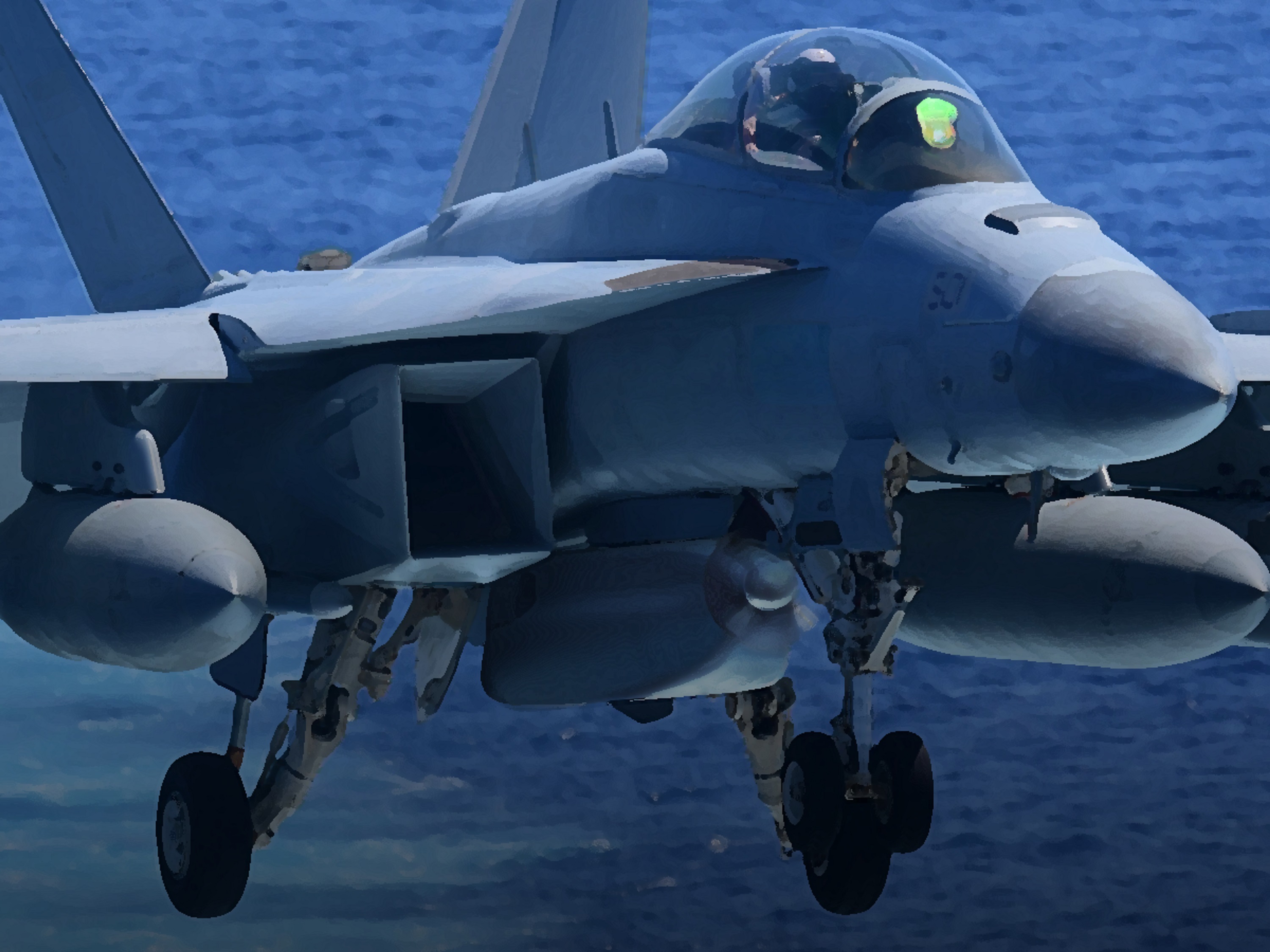
The Navy hopes to speed up the fielding of its new low-band jammer for the EA-18G Growler and has awarded two companies additional money to further mature their designs to avoid slowdowns and cost-increases that a similar jammer program faced.
The Navy recently awarded additional funds through a contract modification to the two teams tapped with creating demonstration units, to help them quicken the pace of developing next-generation jamming technology that meets both the Navy’s technological capability requirements and fits within the physical constraints of the Growler’s airframe design. The Navy wants to demonstration units ready for testing by June 2020, according to the Navy’s contract modification. The low-band portion of the overall Next Generation Jammer effort is expected to cost about $1 billion.
Northrop Grumman was awarded an additional $13.5 million for its efforts to create a low-band jamming pod, after an initial award of $35.2 million. L3 Technologies was awarded an additional $13.7 million to create its low-band jamming pod, after an initial award of $35.7 million.
“Northrop Grumman is pleased to have been selected by the U.S. Navy in October 2018 for the Next Generation Jammer Low Band demonstration of existing technologies (DET) program. The additional funding awarded on May 8, 2019, will allow the Northrop Grumman-led industry team to continue to work closely with the Navy to continue to reduce risk and support requirements for this fast-paced program,” Curtis Pearson, Northrop Grumman’s director of advanced programs, said in a statement.
Dubbed the Next Generation Jammer – Low Band or NGJ-LB program by the Navy, the purpose of this program is to create a replacement for the aging ALQ-99 Tactical Jamming System (TJS) currently used on the Growlers for airborne electronic attack. The Growlers inherited the ALQ-99 system from the legacy aircraft EA-6B Prowler aircraft, now retired by the Navy.
The Navy split the acquisition of new jamming technology into three increments, based on the frequencies the system needs to block – high-band, mid-band and low-band. The Navy is also currently developing mid-band jamming capabilities for the Growler. However, this program hit some snags with the jamming pod structure design, resulting in a year-long delay and bumping up the overall program cost by $400 million, according to a Government Accountability Office report. The additional development money going to Northrop Grumman and L3 is meant to have a more mature design when demonstrator testing begins, in the hopes of avoiding the same discovery of design problems and subsequent delays the mid-band effort saw.
The low-band jammer program briefly stalled while Raytheon protested the Navy’s selection of the Northrop Grumman and L3 teams. The GAO ultimately denied Raytheon’s protest, and in October the Navy gave both Grumman and L3 teams the green light to proceed.
“Raytheon’s proposal for the low-band pod was partially rejected as a result of increased drag over competing designs. These increases in drag have been reported to reduce the operational range of the EA-18G. The specific impact on range is classified,” according to a Congressional Research Service report released last week.
The challenge for the low-band pod is creating a system that can power-up and not overheats while also not interfering with the air intakes for the Growler’s engines. Any increase in drag also causes the aircraft to use more fuel, thus reducing its range and amount of time it can remain over a battlefield – the same issue that Raytheon encountered in its bid.
The demonstration tests of the Northrop Grumman and L3 designs, expected to occur in June 2020, will determine whether the Navy starts a follow-on development or a rapid prototype program, according to the GAO’s May 2019 Weapon Systems Annual Assessment.
The low-band jamming technology can identify targets but is most useful disrupting battlefield communications, industry officials told USNI News. Low-band jamming could also play a role in launching offensive cyber operations.
The following are the Navy awards to Northrop Grumman Systems Corp. and L3 Technologies Inc.:
Northrop Grumman Systems Corp., Bethpage, New York, is awarded a $13,517,069 modification (P00003) to a previously awarded cost-plus-fixed-fee contract (N0001919C0015) to expand the analysis and design of the Next Generation Jammer Low-Band (NGJ LB) controller, receiver, exciter, and power generation subsystems. In addition, this modification provides for NGJ LB technique development, incorporation of updated goals documents, and environmental testing of the transmitter group. Work will be performed in Bethpage, New York (40 percent); Linthicum, Maryland (32 percent); North Amityville, New York (12 percent); Tempe, Arizona (12 percent); and Melville, New York (4 percent), and is expected to be completed in June 2020. Fiscal 2019 research, development, test and evaluation (Navy) funds in the amount of $13,517,069 will be obligated at time of award, none of which will expire at the end of the current fiscal year. The Naval Air Systems Command, Patuxent River, Maryland, is the contracting activity.
L3 Technologies Inc., Salt Lake City, Utah, is awarded $13,686,773 for modification P00004 to a previously awarded cost-plus-fixed-fee contract (N0001919C0014) to expand the analysis and design of the Next Generation Jammer Low Band (NGJ LB) controller, receiver, exciter, and power generation subsystems. In addition, this modification provides for NGJ LB technique development, incorporation of updated goals documents, and environmental testing of the transmitter group. Work will be performed in Salt Lake City, Utah (53 percent); Carlsbad, California (15 percent); Boulder, Colorado (14 percent); Stuart, Florida (14 percent); Guthrie, Oklahoma (2 percent); and Fullerton, California (2 percent), and is expected to be completed in June 2020. Fiscal 2019 research, development, test and evaluation (Navy) funds in the amount of $13,686,773 will be obligated at time of award, none of which will expire at the end of the current fiscal year. The Naval Air Systems Command, Patuxent River, Maryland, is the contracting activity.





